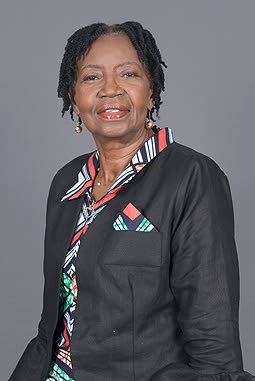From seclusion to depopulation: Dead Bay Village

Dr Rita Pemberton
On the fringes of the Bloody Bay estate, and sandwiched between the districts of L’Anse Fourmi, Parlatuvier and Bloody Bay, are two small villages which constituted their own worlds, had limited interaction with the rest of Tobago and never attracted much public attention.
These are the villages of Dead Bay and Gilpin, which both stand on hilly terrain.
Their existence signifies the primacy that was placed on land ownership and distance from plantation control by the freed population and their descendants – without emphasis on access to facilities and contact with the rest of the island.
According to some former residents, both Bloody Bay and Dead Bay were named after phenomena of the area during the frequent battles which were fought between rival European powers for possession of Tobago during the 18th century.
Contrary to another explanation, that the sea was discoloured by the runoff from indigo processing on nearby estates, oral sources insist that it was the blood of those wounded in the battles that discoloured the water and gave Bloody Bay its name.
During and after these battles, the bodies of those who were killed washed down to the bay which was named Dead Bay, as was the village which developed around it.
After emancipation, some portions of the Bloody Bay estate, which was owned by the Fergusons of Scotland, were sold to free Africans; the main purchaser was the patriarch of the Burris family, whose descendants remained the dominant landowners and main residents of Dead Bay Village
The village community was extremely small, and was provided with no road, church nor school. As a result, children had to travel 17 miles of track through forested areas to get to school in Roxborough. There was little by way of interaction with others outside the village, which remained isolated for decades.
The residents worked in agriculture, hunting and fishing. Hunting provided food variety. The Big Ben birds were hunted and their chicks, which were called boobies, were picked off Sisters Rock, and provided a replacement for chicken.
There was no commercial activity in the village, so residents obtained groceries from Parlatuvier and Bloody Bay.
Transport was very difficult. One route to other parts of the island was through Parlatuvier, which meant residents who wanted to travel out of the village had to leave home early in the morning and walk to Parlatuvier to catch the lone jeep which made one trip out of the area daily. The other option was to walk to Broadway and Moriah, which involved leaving home at 2am for the long trek.
The road was traversed by the Bloody Bay and Dead Bay rivers, and became impassable during the rainy season. In some instances, villagers had to wait hours for the runoff to be able to cross the river.
One member of the Burris family recounts her experiences. After she made the long trek to school on foot, the rivers were so swollen that she had to wait for hours for the water to run off. Alone and in the dark, terrified by the scary stories about the rivers, she had to remain in the dark until the water was low enough for her to wade through and make the crossing.
But the rivers were the lifeline of the villagers. They provided water for all domestic activities.
Cooking was done outdoors and driftwood from the beach was used as fuel for cooking fires. Clothes were washed in the rivers and dried on the river stones, and many of the villagers’ stories were based on the rivers. Rivers were feared because they were believed to be home to dangerous fairies and alligators, and these provided the folklore of the community.
The village was a close-knit one, as people were dependent on each other and many were related by blood. Recreation was limited because of the terrain. Especially on moonlight nights, storytelling was the popular activity.
The small village and the challenges the villagers faced attracted the attention of APT James, who campaigned for and built the trace leading to Roxborough into an access road.
Life came to Dead Bay Village when the government, in its effort to promote pastoral farming and improve the quality of the animals produced on the island, leased land from the Burris family and established a breeding unit in the village. Mr Ebenezer Burris, a demonstrated expert in the field, was appointed to manage the unit. Burris devoted his life to his job, which he took very seriously.
The population of the village was increased by workers at the unit, and traffic in the village also increased as farmers brought and took animals to and from the unit. When Burris died, the unit was closed, the workers left the village and the building became dilapidated; but he left a healthy family legacy of 36 children (some say 41).
But his death marked the decline of the small village, because of the heavy migration of the villagers, including members of the Burris family, to other parts of Tobago in search of job opportunities, access to schools and better infrastructure.
Dead Bay Village remains virtually dead, except for a couple of squatters who plant gardens in the area.
However, the scenic attractions of the area, the Dead Bay Waterfall, views from the hillside and the Sisters Rocks remain striking features of the village.


Comments
"From seclusion to depopulation: Dead Bay Village"